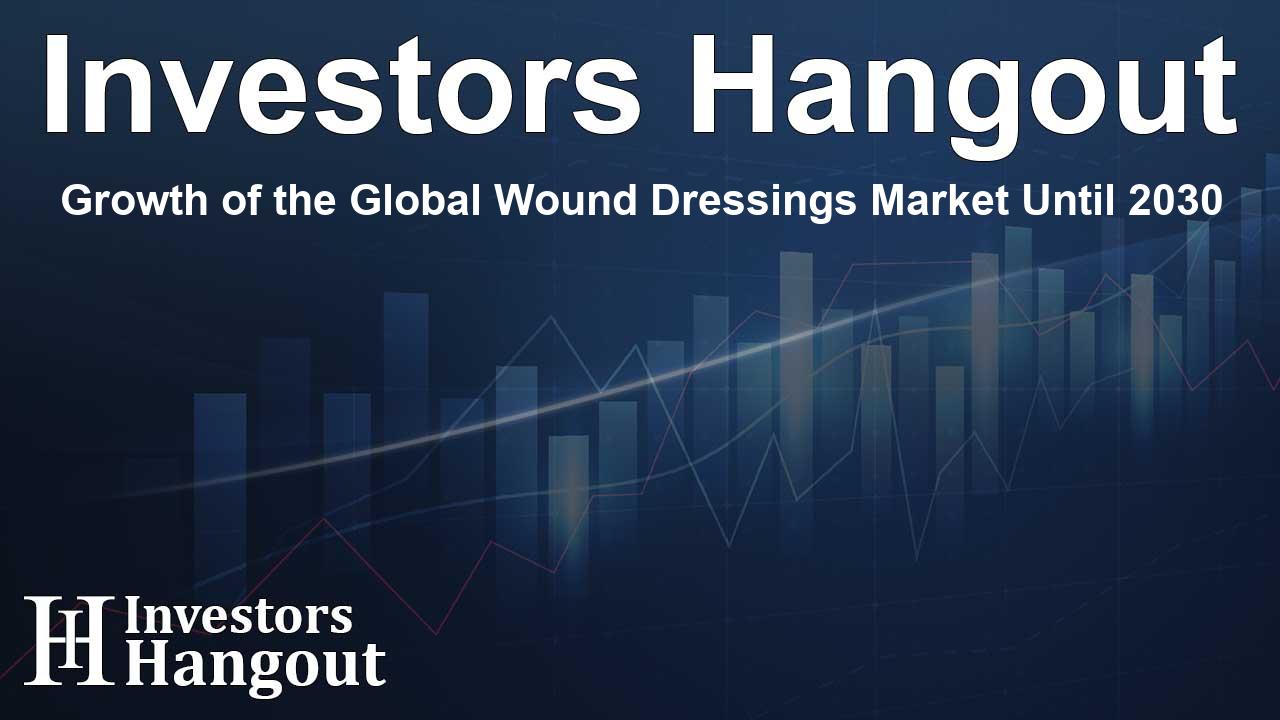Growth of the Global Wound Dressings Market Until 2030

The Future of the Wound Dressings Market
The wound dressings market is on a trajectory poised for substantial growth, projected to achieve a remarkable valuation of US$15.87 billion by the end of the decade. A significant factor contributing to this expansion, which represents a steady compound annual growth rate (CAGR) of 6.5%, is the increasing incidence of traumatic injuries and chronic diseases worldwide. As populations age and health conditions evolve, the need for effective wound care solutions is more critical than ever.
Drivers of Market Growth
Several trends are fueling the demand for advanced wound care products. The rise of chronic conditions, including diabetes, along with an aging population, creates an urgent need for improved wound management. Compounded with the rising awareness of infection control and patient comfort, these factors establish a favorable market landscape. Moreover, government backing through supportive initiatives and reimbursement strategies plays a significant role in this growth, facilitating easier access to wound care solutions.
The Role of Advanced Dressings
Among the various product segments, advanced wound dressings are set to dominate the market. By offering better healing, infection control, and comfort, these options cater to the growing need for specialized care associated with chronic wounds like diabetic ulcers and surgical complications. The healthcare sector's increased emphasis on technological advancements propels this segment forward, encouraging the adoption of innovative dressing materials.
Market Segmentation by End Users
When analyzing the wound dressings market, hospitals, ambulatory surgical centers (ASCs), and clinics represent the largest share of end users. As chronic conditions become more prevalent, these healthcare settings have adapted to provide specialized wound care services. This focus on effective management within clinical environments underscores the demand for both traditional and advanced wound dressings, as healthcare professionals strive to enhance patient outcomes.
Geographical Insights
The market is not limited to one area; it comprises five geographical regions: North America, Europe, Asia Pacific, Latin America, and the Middle East & Africa. Europe currently accounts for the largest market share due to its well-established healthcare infrastructure and high health expenditures. The region's aging population is particularly vulnerable to chronic wound conditions, which fuels a consistent demand for wound dressings.
Competitive Landscape
A variety of prominent companies are key players in the wound dressings market, including Solventum, Smith+Nephew, Convatec Group PLC, Coloplast Group, Cardinal Health, Mölnlycke AB, and Integra LifeSciences Corporation. These companies are continuously innovating and expanding their product offerings. For instance, Solventum has positioned itself as a robust player in the healthcare landscape, focusing on introducing advanced wound care products tailored to improve patient outcomes.
Smith+Nephew has also made significant investments in research and development, aiming to cement its status as a leader in the wound dressings market. With financial commitments reaching millions annually, their innovative approach promises better solutions and accessibility for healthcare providers and patients alike.
Innovative Strategies and Future Directions
To maintain their competitive edge, companies like Mölnlycke AB are pursuing both organic and inorganic growth strategies. The recent acquisition of PGF Industry Solutions is a testament to their commitment to enhance their product range and availability in the market. This strategic move exemplifies the ongoing efforts in the industry to bolster product offerings and address the increasing demand for advanced wound care.
Challenges Ahead
Despite the positive outlook, challenges persist. The high cost of advanced wound dressings and the associated risks can act as barriers to widespread adoption. Additionally, underdeveloped regions may struggle due to a lack of trained healthcare professionals and insufficient awareness about advanced wound care options. Overcoming these hurdles requires collaboration between industry players, governments, and healthcare providers to facilitate awareness and education on wound management practices.
Frequently Asked Questions
What is the projected market value of the wound dressings market?
The wound dressings market is expected to reach US$15.87 billion by 2030.
What factors are driving the growth of the market?
The market's growth is driven by the rising incidence of chronic diseases, an aging population, and government support through favorable initiatives.
Which segment dominates the wound dressings market?
The advanced wound dressings segment held the largest market share, primarily due to the prevalence of chronic conditions.
Who are the key players in the wound dressings market?
Key players include Solventum, Smith+Nephew, and Mölnlycke AB, among others.
What challenges does the market face?
The market faces challenges like high costs, potential risks of advanced dressings, and limitations in underdeveloped regions.
About The Author
Contact Olivia Taylor privately here. Or send an email with ATTN: Olivia Taylor as the subject to contact@investorshangout.com.
About Investors Hangout
Investors Hangout is a leading online stock forum for financial discussion and learning, offering a wide range of free tools and resources. It draws in traders of all levels, who exchange market knowledge, investigate trading tactics, and keep an eye on industry developments in real time. Featuring financial articles, stock message boards, quotes, charts, company profiles, and live news updates. Through cooperative learning and a wealth of informational resources, it helps users from novices creating their first portfolios to experts honing their techniques. Join Investors Hangout today: https://investorshangout.com/
The content of this article is based on factual, publicly available information and does not represent legal, financial, or investment advice. Investors Hangout does not offer financial advice, and the author is not a licensed financial advisor. Consult a qualified advisor before making any financial or investment decisions based on this article. This article should not be considered advice to purchase, sell, or hold any securities or other investments. If any of the material provided here is inaccurate, please contact us for corrections.
